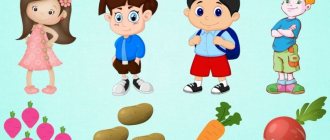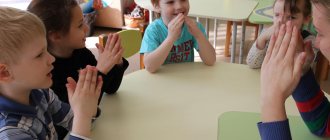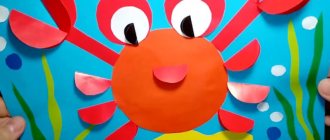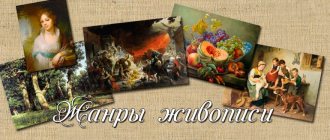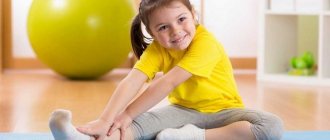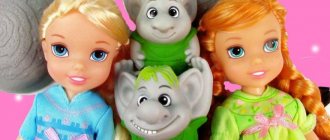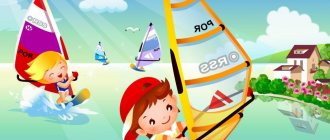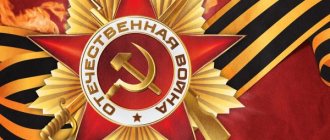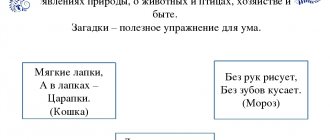What are the benefits of fingering for brain development and memory improvement?
Using certain exercises for a few minutes a day, you can achieve noticeable results in a short time - improve communication, organization and concentration skills. Thus, it will become easier for the child to learn and quickly master everything new.
Finger gymnastics is especially useful in elementary school. Teach, interest, captivate and entertain. And all this must be done within the framework of the lesson. Being a teacher is difficult, and even more so as a primary school teacher. After all, in order to keep the attention of primary schoolchildren, it is necessary to change activities every 5-10 minutes. Otherwise, children get tired, stop absorbing information and simply become bored.
To make the lesson dynamic, experts recommend alternating educational activities with physical education sessions during classes. Finger games are ideal within the classroom. Especially musical finger games for children are a great opportunity to have useful fun.
They are dramatizations of invented rhyming tales or stories that are acted out using the fingers. This is not a new method; such game forms of learning appeared a long time ago, but do not lose their relevance. After all, the nerve endings of the hands have an impact on the child’s brain, as a result of which mental activity is activated and sharpened. Finger gymnastics is especially relevant in first grade.
Such games and exercises contribute to the formation of visual attention, fantasy, memory, imagination, and communication skills. And, in the end, it’s just interesting for children! Modern finger games in verse will appeal to teachers, parents, and students.
Finger gymnastics tasks
The objectives of finger gymnastics exercises for the brain are:
- restoration of the body;
- activation of the nervous system;
- relaxation and minimization of stress;
- and increased energy.
Using these exercises you can improve the following skills :
- reading;
- speech;
- drawing;
- letter;
- mobility;
- vision;
- hearing;
- memory;
- concentration;
- time planning;
- organization skills;
- artistic abilities.
The principle of operation of finger gymnastics
All finger gymnastics exercises are associated with stress suppression. Stress is often the main cause of learning delays. It also weakens the body. Finger exercises for the brain form the habit of positive thinking. This is facilitated by so-called exercises that deepen and balance emotions in terms of a positive attitude.
The method involves integrating the mind and body through organized movements. This gymnastics is based on three simple principles:
- it is necessary to study natural abilities and engage in pleasant areas of activity that are individual to each person;
- There are hidden blockages in the human body that prevent you from learning and acquiring new skills;
- It is necessary to correctly recognize blockages that can be removed (provided that the exercises are carried out correctly).
Also important is the integration of both hemispheres of the brain, each of which is responsible for its own tasks and functions.
The right hemisphere of the brain is responsible for:
- feelings;
- facial expressions;
- education;
- long-term memory;
- perception;
- artistic abilities.
The left hemisphere of the brain (logical) is responsible for:
- thoughts;
- analysis;
- comparison of facts;
- perception (feeling) of time;
- control over words;
- verbal communication;
- speech center;
- ordering reality;
- hearing;
- short term memory.
Thanks to the joint work of both hemispheres of the brain, it is easier to learn new knowledge and skills.
Finger gymnastics “Wild Animals” in the senior group
We offer poems with instructions for performing finger gymnastics in the senior preschool group. The teacher reads the poem, shows what movements to perform, and the students repeat after him.
In the forest
Fingers, where have you been? - children make the “class” sign, stick out their thumb;
Fingers walked through the forest. — raise and lower the hands asynchronously;
There's a bunny, a bear, a wolf,
And there's a hedgehog covered in spines. - take turns touching the right thumb with the tips of the index, middle, ring and little fingers;
We saw a snake, a fox,
Also badger, marten. - take turns touching the left thumb with the tips of the index, middle, ring and little fingers;
We walked through the forest for a long time,
All the paths have been trampled. - raise the hands, rotate them left and right.
Hibernation
Children have five fingers - pupils take turns unclenching their right and left fingers, starting with the thumb;
We went for a walk in the forest in winter. - raise the hands, rotate them left and right;
The wolf and the fox don’t want to sleep; they clench and unclench their right and left fists;
And the bear is dreaming. — place their combined palms under their cheeks, as if they are sleeping;
The hedgehog in the hole is curled into a ball; they take turns combining the tips of the right and left fingers;
And the badger went to bed. - take the combined fingers away from each other;
Good dreams to the little animals,” they clasp their hands in the shape of a “castle”;
All the guys wish! - clap their hands.
Forest Dwellers
Now we learn from the footprints - the children fold their hands in a vertical “boat”;
Who lives in the forest? - open the “boat”;
Here are the tracks of a fox,” bend the right thumb;
Wolf, small bird - right index and middle;
Boar, little hare - right ring and little fingers;
Bear and hedgehog - bend the left thumb and index fingers;
Nimble squirrel, lynx, left middle and nameless;
And elk were found. - left little finger;
Oh, how many inhabitants there are in the forest! - Raise your arms above your head, then smoothly spread them to the sides.
In the forest
There are fir trees in the thicket of the forest; children join their palms in a triangle;
Angry wolves prowl beneath them. - show a “wolf face” - bend the index finger, put the thumb aside, move the little finger up and down;
Little bunnies rarely run - they straighten their index and middle fingers, move them, imitating bunny ears;
The branches of the spruce trees are touching. - move relaxed hands in different directions;
Teddy bear cub,
Tears off branches with a large paw. - clasp the fingers, depicting a bear’s head, and put the combined thumbs aside, imitating a bear’s nose;
There's a little hole under the tree,
This is a house for a hedgehog. - fold the brushes into a ball shape.
Examples of finger exercises for the brain for teenagers and adults
Alternating movements
It is necessary to touch your right knee to your left elbow and your right elbow to your left knee for some time. Then touch your left leg with your right hand and your right leg with your left hand.
Effects:
- improves writing, hearing, memory, reading and comprehension;
- improves coordination of movements of the left and right sides of the body;
- increases breathing;
- causes an increase in energy.
Thinker's Cap
Using your thumbs, you need to grab the ears and massage them (pulling them back and squeezing them with your thumb and index finger). Start the massage from the top and move down to the earlobe.
Effects:
- improves attention, hearing, recognition, discrimination, perception, memory;
- promotes good functioning of short-term memory;
- listening with comprehension;
- improves singing and playing musical instrument skills.
Lazy eights for eyes
To begin, you need to extend your left hand in front of you, clench it into a fist, and point your thumb up. Then draw a figure eight (symbol of infinity) in the air with a smooth, continuous movement, following the hand with your eyes and keeping your head motionless. You should start from the center, draw a figure eight in the direction opposite to the clockwise movement - up, down, and around, and back, inward. After 5 repetitions of the figure eight with one hand, use the other hand (also 5 times), and then 5 times with both hands together.
Effects:
- vision coordination;
- development of peripheral vision;
- improves the reading mechanism (eye movements from left to right);
- promotes better character recognition when writing;
- improves writing fluency;
- promotes conscious reading;
- increases the sense of balance and the ability to perceive with both eyes.
Rib massage
One hand should be placed on the navel. At the same time, with the other hand you need to massage the depressions between the 1st and 2nd ribs, right under the collarbone, to the right and left of the sternum.
Effects:
- improves blood supply and oxygenation of the brain;
- removes mirror images of letters and numbers;
- promotes correct body position while reading.
Cross position
The exercise involves crossing your legs at the ankles. Then the arms are crossed, palms joined together. After this, you need to move one hand over the other, connecting the inner sides of the palm with your thumbs down and closing them with folded fingers. Then you need to lower your crossed arms down and to the side of your body so that they fall onto your chest with your elbows down. Then you need to close your eyes, touch the roof of your mouth with your tongue and breathe freely.
Effects:
- improves attention and hearing;
- increases the efficiency of learning and responding to stimuli;
- useful for controlling your own behavior;
- restores concentration;
- reduces stress levels, for example, before training.
Free slopes
You need to stand up, cross your legs at the ankles, bend your torso freely forward, stretching your arms in front of you (as if giving your body to the action of gravity).
Effects:
- a sense of grounding and stability;
- visual integration;
- promotes conscious reading;
- improves memory counting;
- develops abstract thinking.
Leg Bend
You need to sit down, bend your leg at the knee and place it on the thigh of the other leg. In this case, the outer ankle should touch the thigh. With your fingertips you need to grab the base and attachment point of the calf muscle, then bend and lift your leg.
Effects:
- development of clear speech and language skills;
- comprehension during reading and listening;
- creative writing ability;
- the ability to follow the logic of a task and complete it.
Cobra
To do the exercise, you need to sit down, put your hands on the table, keep your shoulders relaxed, and start breathing as if “from the base of the spine.” Focus on your breathing as if it were your main source of strength.
Effects:
- relaxation of the central nervous system;
- binocular vision;
- listening with understanding of oral speech;
- development of speech skills;
- fine motor control.
Energy yawn
You need to touch with your fingertips the place where the lower jaw connects with the upper jaw, massage these places, slightly opening your mouth and imagining the desire to yawn.
Effects:
- improved sensory perception;
- improvement of motor functions of the eyes and muscles responsible for chewing;
- increasing attention and visual perception;
- increasing communication, information seeking, reading aloud and public speaking.
Finger gymnastics helps to diversify the educational process, promotes the comprehensive development of the child and improves fine motor skills. And this, in turn, lays the foundation for the formation of correct calligraphic writing. Finger games are a real “must have” for developing a child’s mental abilities!
Finger gymnastics “Wild Animals” in the middle group
We offer finger games to improve motor skills and muscle strength of fingers and hands in preschoolers of the middle age group.
Squirrel
A squirrel jumps through the pine trees; the students quickly move their fingers along the horizontal surface;
He deftly tears and hides the pine cones—they clench and open their right and left fists asynchronously;
Looks for seeds in the grass, rubs his hands together;
And keeps it in his hollow. - fold the brushes in a cup shape.
Friendship
Animals are true friends: - children connect their hands with a vertical “boat”;
The beaver has a friend in the river; they tap their little fingers against each other;
The hedgehog has a friend, they tap on the nameless ones;
The gray bunny has middle fingers;
Friendship is made by wild boars - with index fingers;
Even the ants are friends. - tapping their thumbs together;
They play, have fun, rotate their hands left and right;
Friends are frolicking in the forest. - they shake their brushes as if they are shaking something off them.
Who lives in the forest?
There is a large family in the forest: - children spread their fingers on raised hands, depicting a forest;
The hedgehog digs a hole under the stump; bend the right little finger with the left index finger;
A fox lives under a pine tree, - bend the right nameless one;
Behind the hill is the elk's dwelling, - right middle;
A little bunny sits under a bush - right index;
And an owlet lives in a hollow. - bend the right thumb with the left index finger;
All the animals were counted
We learned about their houses. - quickly clench and open your fists.
Chanterelle
Beautiful fox
He boasts about beauty: - students rub one palm against the other;
With a fluffy tail,
Golden fur coat. - spreading their fingers, stroke them on one hand, then on the other;
It darts around the bushes, “running” with its index and middle fingers along a horizontal surface;
He scatters the bunnies. - asynchronously strike with fists on a flat surface.
Squirrel and sparrow
The squirrel, looking out from the hollow, the pupils fold their right and left fingers into whispers, then combine them, while raising their index fingers;
I saw a sparrow: - fold the open hands in a cross shape, hook one thumb behind the other - you get bird wings, which they flap;
Fly into the hollow quickly
It's calmer and warmer here. - fold the hands into balls.
Junior group
We present simple and fun finger games for younger preschoolers.
Little mice
One two three four five,
Let's count the field mice: - children bend and open their fists;
One is sleeping in the hole, both thumbs are bent;
The second one runs along the path - they bend their index fingers;
The third spikelet bends - medium;
The fourth picks the grains. - unnamed;
And the fifth one rubs his paws, bends his little fingers;
Lunch awaits. - rubbing their hands together.
Hedgehog
A hedgehog walks along the path - the pupils spread their fingers;
Carries mushrooms on its back. - “walk” with the index and middle fingers along a horizontal surface;
Mushrooms need to be counted
Bend our fingers. - alternately bend the fingers on the left hand, then on the right hand.
Winter dream
A badger and a hedgehog are sleeping in a hole; the children bend their thumb and index fingers;
And the bear is in the den too. - average;
Bees, ants, the ring and little fingers are dozing;
Waiting for spring. - spread your arms above your head in different directions.
Bunny
A bunny sits under a bush, the students clench their hands into fists;
Everything is shaking from the frost. - bend and straighten fingers;
It’s cold to sit in the snow; they rub themselves with their hands as if they were cold;
You need to warm up your paws. - rub your palms against one another.
